Today is Aippasi Thiruvonam, the thirunakshatram or birthday of Pillai Lokacharya who was born in the river island of Srirangam or Thiruvarangam around 800 years ago.
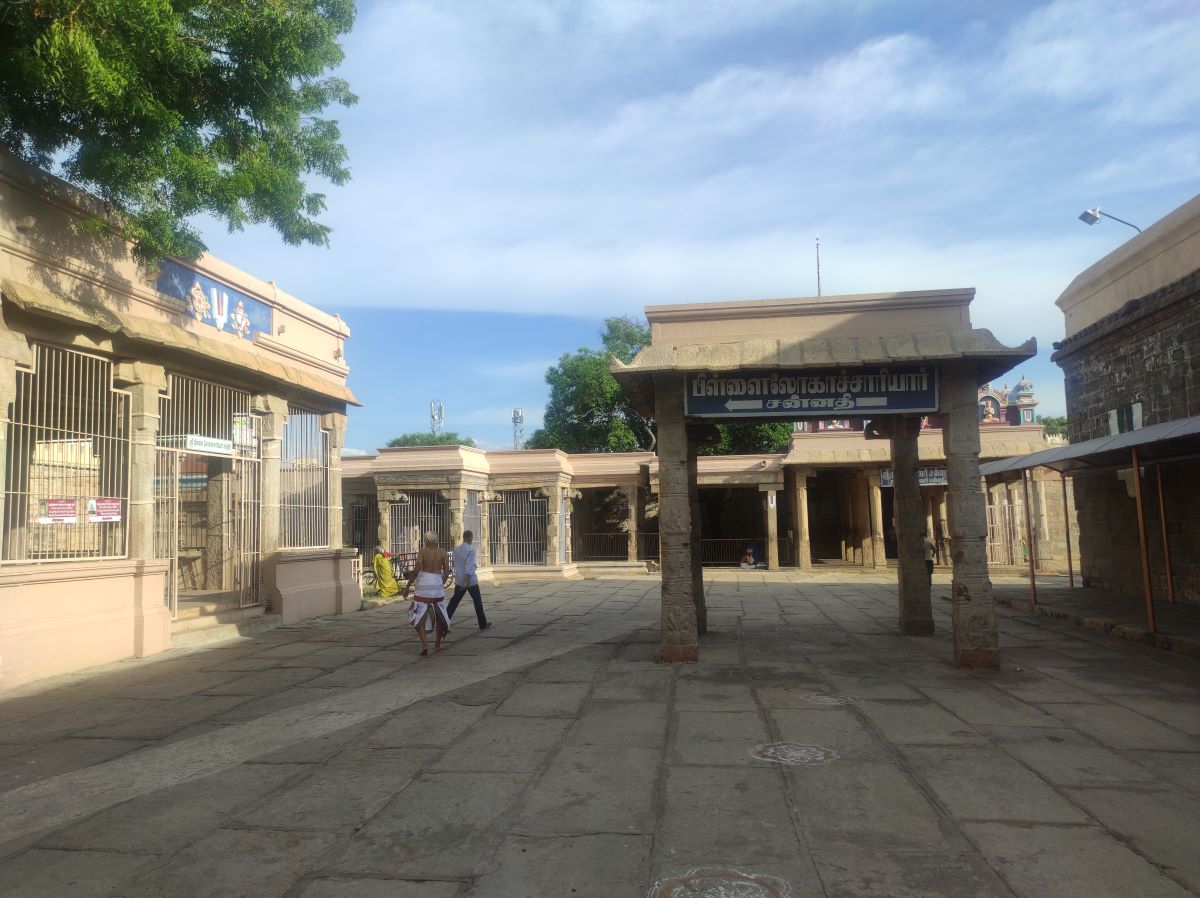
A shrine for Swami Pillai Lokacharya in the Srirangam or Thiruvarangam temple complex. The Ranganatha Swamy temple in Srirangam is the largest living temple in the world (Prasanna RS/South First)
Today is Aippasi or Thula Thiruvonam, the thirunakshatram or birthday of Swami Pillai Lokacharya, an acharya in the Srivaishnavam tradition. This year, it has fallen on 1 November in the Gregorian calendar.
The star of Thiruvonam in the Tamil month of Aippasi is also the birthday of Poigai Azhwar, the first of the 12 Azhwar saints whose Tamil works — along with the Ramanuja Nootrandhadhi of Thiuvarangathu Amudhanar — form the Naalayira Divya Prabhandam, also called the Dravida Veda.
Before we learn about Swami Pillai Lokacharya, who was born around 800 years ago in Srirangam or Thiruvaragam, let us take a quick look at the Srivaishnavam tradition.
In Srivaishnavam, the Guruparamparai — lineage of acharyas — starts with Sriman Narayana, then Sri Lakshmi, Vishwaksena (the chief minister of Sriman Narayana), Swami Nammazhwar (one among the 12 Azhwar saints), Naathamunigal, Uyyakondar, Manakkal Nambi, Aalavandhar, Periya Nambi, and Swami Ramanujacharya.
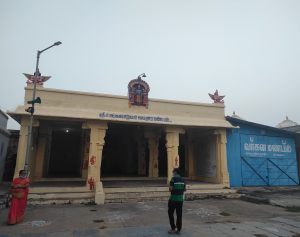
Poigai Azhwar Avatara Mandapam in Sonna Vannam Seidha Perumal Koil (Yathothkari Perumal or Tiruvekka) in Kanchipuram. Aippasi Thiruvonam is also the thirunakshatram or birthday of Poigai Azhwar, the first of the 12 Azhwar saints (Prasanna RS/South First)
From Swami Ramanujacharya, the tradition spread through 74 gurus known as “74 Simhaasanaadhipathis”. One among the 74 was Mudumbai Nambi, a great disciple of Swami Ramanuja.
From Ramanujaacharya, the Guruparampara continued with Embar, Parasara Bhattar, Nanjeeyar, Nampillai, and Vadakku Thiruveedhi Pillai.
Vadakku Thiruveedhi Pillai, born in the lineage of Mudumbai Nambi, with the grace of his Acharya, got a son. He named him after his Acharya — Nampillai — as “Pillai Lokacharya”.
Born almost 800 years earlier in the Aippasi or Thula month on Thiruvonam star, Swami Pillai Lokacharya learnt shastras and the Divya Prabhandham from his father and acharya, Vadakku Thiruveedhi Pillai.
Swami Pillai Lokacharya became the Darshana Pravarthaka — a position referring to acharyas in the Guruparampara lineage — after his father.
Swami Lokacharya’s eloquence in Sanskrit and Tamil, and knowledge of Vedas, Ithihasa, Puranas, Upanishads, and Divya Prabhandam were unparalleled.
He composed 18 granthas or works, often referred to as 18 rahasyas (secrets). In these he has answered in a very detailed manner on who is Aathma, who is Paramathma or Sarveshwara, what are the values or knowledge one should possess to attain salvation or moksha, who is a guru and who is a sishya.
Three of his most important granthas are the Tamil works Mumukshupadi, Thathvathrayam, and Srivachanabhooshnam.
Pillai Lokacharya had the company of his younger brother and disciple, the illustrious Azhagiya Manavala Perumal Naayanaar, in explaining and compiling complex philosophical principles in the form of simple granthas.
In the Srivaishanavam tradition, Swami Pillai Lokacharya is considered an avatar of Kanchipuram Varadaraja Perumal or Devaperumal. Once a Vaishnava named Manarpaakathu Nambi had a dream in which Varadaraja Perumal told him a few secrets. Devaperumal further said that he would tell him the rest in Srirangam.
Manarpaakathu Nambi then visited Srirangam or Thiruvarangam and worshipped Sri Ranganatha Swamy and later went to the Lakshmi Narasimha temple in the island, known as Kaattazhagiya Singar Koil that was situated amidst dense trees.
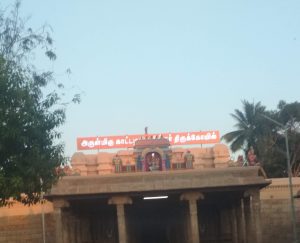
Kaattazhagiya Singar Koil in Srirangam, a shrine for Lakshmi Narasimha in the island (Prasanna RS/South First)
Swami Pillai Lokacharya had chosen that place to teach his works to sishyas. Manarpaakathu Nambi heard the continuation of Varadaraja Perumal’s message in Pillai Lokacharya’s words. He went on to ask if he was Varadaraja Perumal himself, to which Pillai Lokacharya said “yes”.
In 1323 CE, when Ulugh Khan (later Muhammad bin Tughluq) raided south Indian cities including Srirangam, Swami Pillai Lokacharya — not worried about his advanced age — motivated the people of Srirangam to act. Along with Swami Vedanta Desika, who was around 50 years younger, Pillai Lokacharya built a stone wall in front of the shrines of Sri Ranganatha and Sri Ranganaachiyar (Lakshmi or Thayaar).
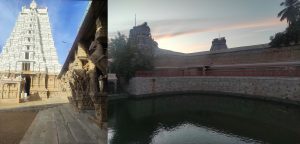
(L) Vellai Gopuram and Sesharaya Mandapam and (R) Chandra Pushkarini in the Ranganatha Swamy temple complex in the river island of Srirangam or Thiruvarangam. It is the largest living temple in the world (Prasanna RS/South First)
Pillai Lokacharya took the Srirangam utsavar (bronze) idol, Namperumal, with him down south to escape from the raiders. He walked a long way through forests in the direction of Madurai.
When thieves tried to attack and loot the ornaments and silk, Pillai Lokacharya instructed them and changed their minds.
En route to Madurai, he fell sick in a place then known as Jyothishkudi, now called Kodikulam.
There Namperumal is believed to have spoken to him directly and told him that he would give moksha to Pillai Lokacharya and all others related to him.
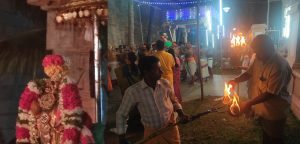
The Srirangam utsavar (bronze) idol, called Namperumal, during the Vasantotsavam in 2022 (Prasanna RS/South First)
In spite of his ill health, with great compassion, Swami went on to touch plants and ants in that place so that these creatures could also attain salvation.
Thus his mercy went beyond just human beings to the tiniest of creatures and plants, making him “Lokacharya”, the guru for the entire world. On his birthday, Thula Thiruvonam, today, let Srivaishnavites pray at his lotus feet so that they develop such attachment to the supreme lord’s service and have great compassion for all beings.
Lokaachaaryaaya guravae krushna paadhasya soonavae
samsaara bhogi santhashta jeeva jeevaathavae nama:
Translation: My obeisances belong to the Acharya named Pillai Lokacharya who is the son of Vadakku Thiruveedhi Pillai and who is the lifesaving medicine for the bound souls that are bitten by the snake of samsaaram.
The above is Pillai Lokacharya’s thaniyan, an invocatory verse, composed by Eeyunni Padmanabhar. Every Azhwar and Acharya would have one or more thaniyans or invocatory verses composed on them, and they would be in Tamil or Sanskrit or both.
In addition, there is the Vazhi Thirunamam, a set of verses about an Azhwar or Acharya that praises them and contains details about their life.
The following is the Vazhi Thirunaamam of Pillai Lokacharya.
அத்திகிரி அருளாளர் அனுமதியோன் வாழியே
ஐப்பசியில் திருவோணத்தவதரித்தான் வாழியே
முத்திநெறி மறைத்தமிழால் மொழிந்தருள்வோன் வாழியே
மூதரிய மணவாளன் முன்புதித்தான் வாழியே
நித்தியம் நம்பிள்ளைபதம் நெஞ்சில் வைப்போன் வாழியே
நீள் வசன பூடணத்தில் நியமித்தான் வாழியே
உத்தமமாம் முடும்பை நகர் உதித்தவள்ளல் வாழியே
உலகாரியன் பதங்கள் ஊழிதொறும் வாழியே
Transliteration:
aththigiri aruLALa ranumathiyOn vAzhiyE
aippasiyil thiruvONaththu avathariththAn vAzhiyE
muththiNeRi maRaiththamizhAl mozhintharuLvOn vAzhiyE
mUthariya maNavALan munputhiththAn vAzhiyE
niththiyam nampiLLaipadham nenjilvaippOn vAzhiyE
nILvasanapUdaNaththAl niyamiththAn vAzhiyE
uththamamAm mudumbaiNagar udhiththavaLLal vAzhiyE
ulagAriyan padhangaL UzhithoRum vAzhiyE
Translation:
The one who was an avatar of Hasthigiri Arulalan (Kanchi Devaperumal),
one who was born on Thula Thiruvonam,
one who said the norms of moksha in Vedic Thamizh,
one who was born before Manavala Mamunigal,
one who always has Nampilai’s thiruvadi in his mind,
one who delivered Srivachanabhooshanam,
one who was born in Mudumbai nagar (lineage),
let that Lokacharya’s holy feet live long eternally.
(TA Badhri Narayanan learnt Divya Prabhandam from his father and acharya, TA Ranganathachariyar. He learnt Shasthras, Srivaishnava Granthas and Samaskrutha Vyakharanam from Sri U Ve Thiruppullani Sundarrajan Swami. An architect by profession, he designs Srivaishanava sampradaya-related books for kids under ‘Sri Maalyathaa Publications’. He was born in the lineage of Swami Ananthazhwan, a disciple of Sri Ramanujaacharya)

Mar 01, 2024

Feb 28, 2024

Feb 22, 2024

Feb 18, 2024

Feb 12, 2024

Feb 11, 2024